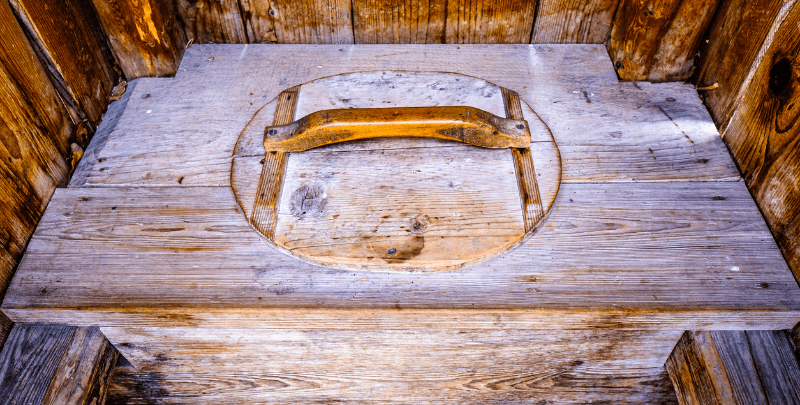A Brief History of the Thunderbox Toilet

For toilet lovers across the world, there’s been a remarkable evolution for the throne. From communal drains and chutes to modern loos and bidets, the luxury we have now is unrivalled.
But toilets as we know them today were once a brand-new invention. There was a time when every house was not connected to a sewerage system. Even 60 or so years ago, many homes still had an outhouse in the backyard.
Nestled among the early days of toilet evolution was the thunderbox toilet. It was the standard and a step towards toilets as we know them today.
And perhaps most importantly, the thunderbox was – and is – synonymous with Australian culture.
It’s time to dive into some toilet history.
The Sound of Thunder
Once upon a time there were communal drains and chutes where people completed their business. All the waste would flow into pits or rivers.
A considerable amount of time later, chamber pots and water closets became the norm. However, waste was still dumped in public spaces. It wasn’t until the 19th century that sewer construction began and the gradual shift towards a more hygienic world was possible.
But right at the time of chamber pots, a new invention sprouted. The thunderbox! If you can’t quite picture it, thunderbox toilets were essentially a wooden commode which contained a chamber pot.
And why was it called thunderbox? Well, think about the sounds made in a bathroom and how that would echo in a wooden box. Very stormy.
Those bathroom rumblings were heard across the world in one way or another. Upper class homes typically had water closets, while others had outhouses in the backyard.
In Australia, those early wooden structures which surrounded a simple drop toilet or thunderbox quickly became a common sight.

Iconic Outhouses
The thunderbox name originated in England and travelled across the ocean. But it was in the land down under where everyone truly was thunderstruck.
Australians did their best to move past the need for chamber pots in the house. And no one wanted to keep dumping waste in the street. For cities like Melbourne, public dumping was so bad a new nickname was earned, Smellbourne.
Opting to ditch the nasty odours, councils invested in sewers. But it was a long term process and thunderboxes didn’t disappear overnight. That meant the night soil men had to work hard for decades!
Their job was to empty the outhouses scattered throughout towns. Their job was also weekly, which meant toilets were only ever emptied once every 7 days.
No wonder old toilets were kept outside.
Outhouses stuck around for a remarkably long time. In fact, in cities like Brisbane, there were still night soil men toiling away through the 1970s as the last stragglers were connected to sewerage systems.
Collecting waste was a nasty job, though, so we’re sure those men were happy to see the end of it. Yet it also signalled the end of an era after decades of hard work setting up Australia’s sewerage systems.
A Lasting Legacy
Once toilets moved inside and were connected directly to sewer pipes, thunderboxes fell out of fashion.
Don’t worry, though, because we haven’t seen the last of the thunderbox. It remains, spread across the globe in various shapes and sizes! From outhouses on the top of mountains, to stubborn structures scattered throughout Australia and America, it’s not going anywhere.
Campers also enjoy the perks with products like the portable metal ThunderBoxTM Outback Toilet. And sure, it may have been relegated to camping trips, but at least the iconic dunny has survived as a quirk of Australian culture.
Please note: This information is provided for advice purposes only. Regulations differ from state to state, so please consult your local authorities or an industry professional before proceeding with any work. See our Terms & Conditions here.